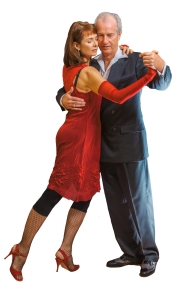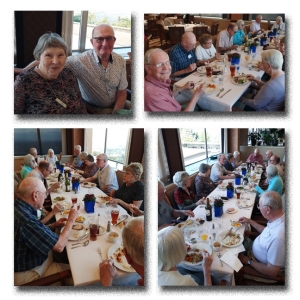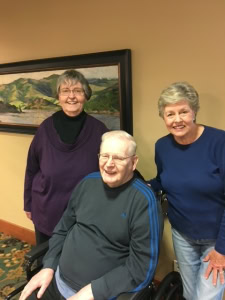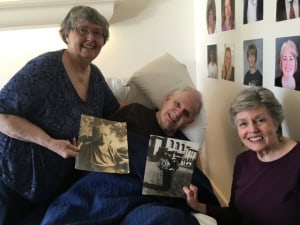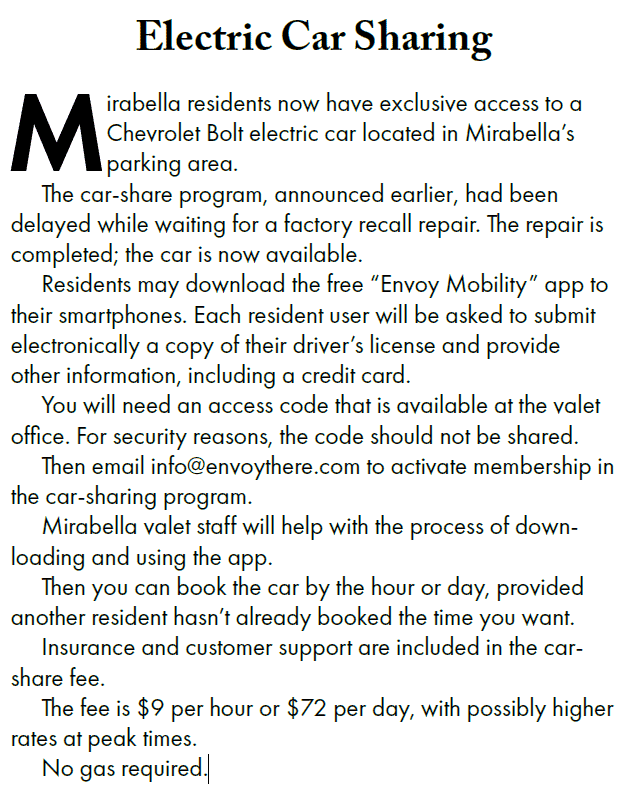Tango at the Manor? Wow!
By Joni Johnson
Believe it or not, we will soon have access to authentic Argentine tango lessons by a resident who has spent much of his life dancing, especially Tango. Just like Johnny in “Dirty Dancing”, Clay Nelson got his start with training from Arthur Murray.
Clay has been a Manor resident for four months but has been a long time resident of Medford and Ashland, where he was instrumental in developing the Ashland Tango group https://www.ashlandtango.com. Clay grew up near Chicago and first started his life in Engineering, with a BS, MS and Ph.D in Theoretical and Applied Mechanics from the University of Illinois. Always interested in dancing, while he was at U of I he started training with the Arthur Murray studio and ended up teaching there.
His career as an engineer took him to NASA, among other places, and then he taught engineering first at the University of Portland and then Texas A&M. While at Texas A&M, he got back into dancing. After presenting a paper in Portland one weekend, he fell in love with the city and asked for a year off from Texas. The one year became two and a half years, and he finally left his tenured position in Texas to stay in Portland permanently.
Eventually, he gave up engineering completely and immersed himself in his new field of dancing. He opened his own studio – Clay’s Dancing Studio. He taught many group classes in all sorts of ballroom dancing, swing being his favorite. But a weekend workshop in Corvallis learning the Argentine tango changed his life forever. That was in 1994. He has never looked back.
He explained that there is a huge difference between authentic Argentine Tango and American Ballroom Tango. Whereas American Tango is driven by competition and specific stylized step patterns, Argentine tango is a more social dance driven by improvisation, communication and connection between you, your partner and the music.
Argentine tango started in the streets of Buenos Aires in the 19th century and is a melding of the music and traditions of European immigrants, South American Indians and African slaves. Ultimately it is an improvisational dance between two people moving in time to the music. However, there is an underlying structure and rules of grammar–just as there is structure and grammar in speaking a language.
On the Ashland Tango site, Clay is quoted as saying “No other dance can compete with the passion and intensity of Argentine Tango!” He told me that when you dance American tango, you are often dancing for a judge or the audience, but when you dance the Argentine tango, you dance for your partner.
Many scientists find that their talents lead them to music in various forms. Clay moved to dancing. As an engineer, he is fascinated analyzing the dance and the music. After his experience with the Argentine tango, he began spending his energy teaching only the tango and leaving the other ballroom dances to other teachers in his studio. Then he got involved in tango festivals, organizing the Portland festival of tango twenty years ago. Festivals have taken him to Seattle, Mexico and Ashland where he made friends with people whom he keeps in contact with to this day. He is currently involved in two festivals, one in Portland https://valentango.us/ and one in McCloud, California https://burningtango.us/. The Portland festival attracts over 700 people and the McCloud festival hosts about 350 dancers.
Clay spent about eight years in Ashland and the same amount of time in Medford before moving to the Manor. The community aspect of RVM really attracted him because he said otherwise it would be so easy for him to become a hermit.
I asked him what he loved about Argentine tango. He said there is a magical moment that happens when you get in sync and connect with your partner and the music, and you create your own dance. He says that the experience often puts one into a wonderful trance-like state.
Clay is excited about starting a tango class here at the Manor. Scheduled start date is Monday Oct 3 from 7:00-8:00 pm in the auditorium. And not to worry if you think tango is too complicated or difficult. Ultimately it is just a walking dance with your partner in time to the music. Clay starts his classes with first clapping to the beat and then moving and walking to the beat with your partner. Gradually he progresses to basic tango steps and moves while at the same time keeping the concepts of leading, following and improvisation in mind. No partner is needed to join the class, and no previous dance experience is needed–in fact some of the best tangueros have never danced before. To see examples of stage performance Argentine tango go to: https://youtu.be/6EPy7Obd2_8
Clay thinks that exposure to the Argentine tango will be a wonderful moment in appreciating another culture and moving in a different way. Also, Clay hopes that there will ultimately be a merging of the RVM Tangueros with the local Rogue Valley Tangueros, and we can all meet for an evening of Tango. The RVM class will be in the auditorium and therefore is not very limited in number. It will be a six-week series. Clay hopes to create a real love for the Tango here on top of the hill. How lucky we are that he moved to RVM.

